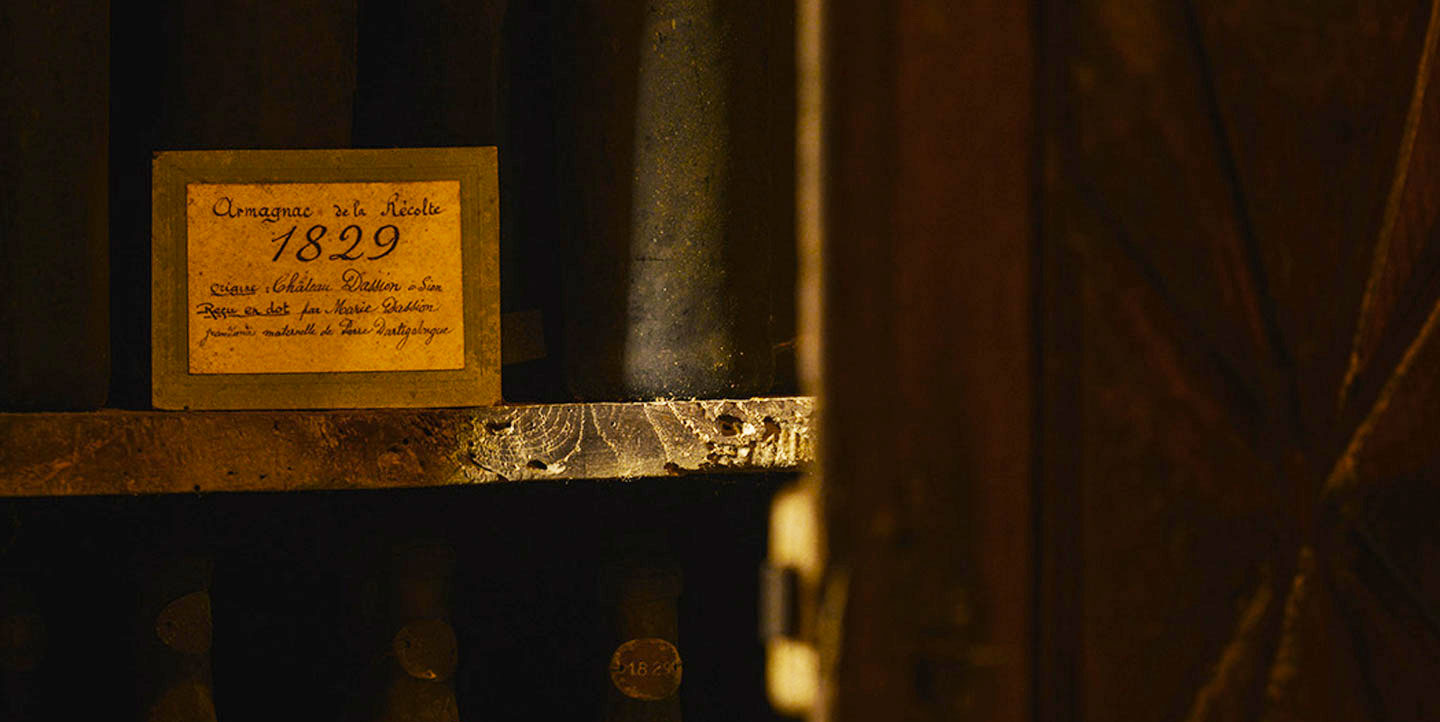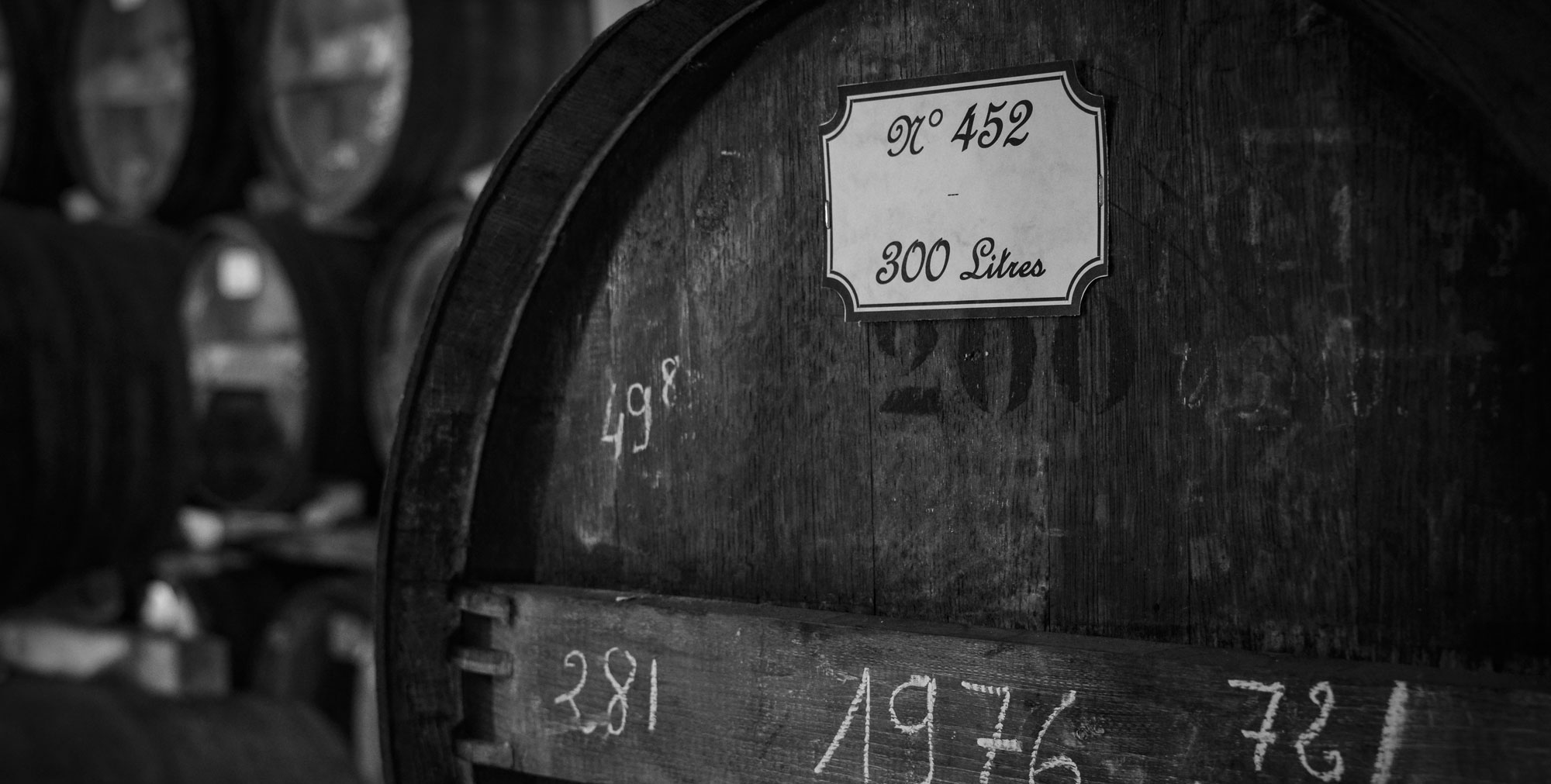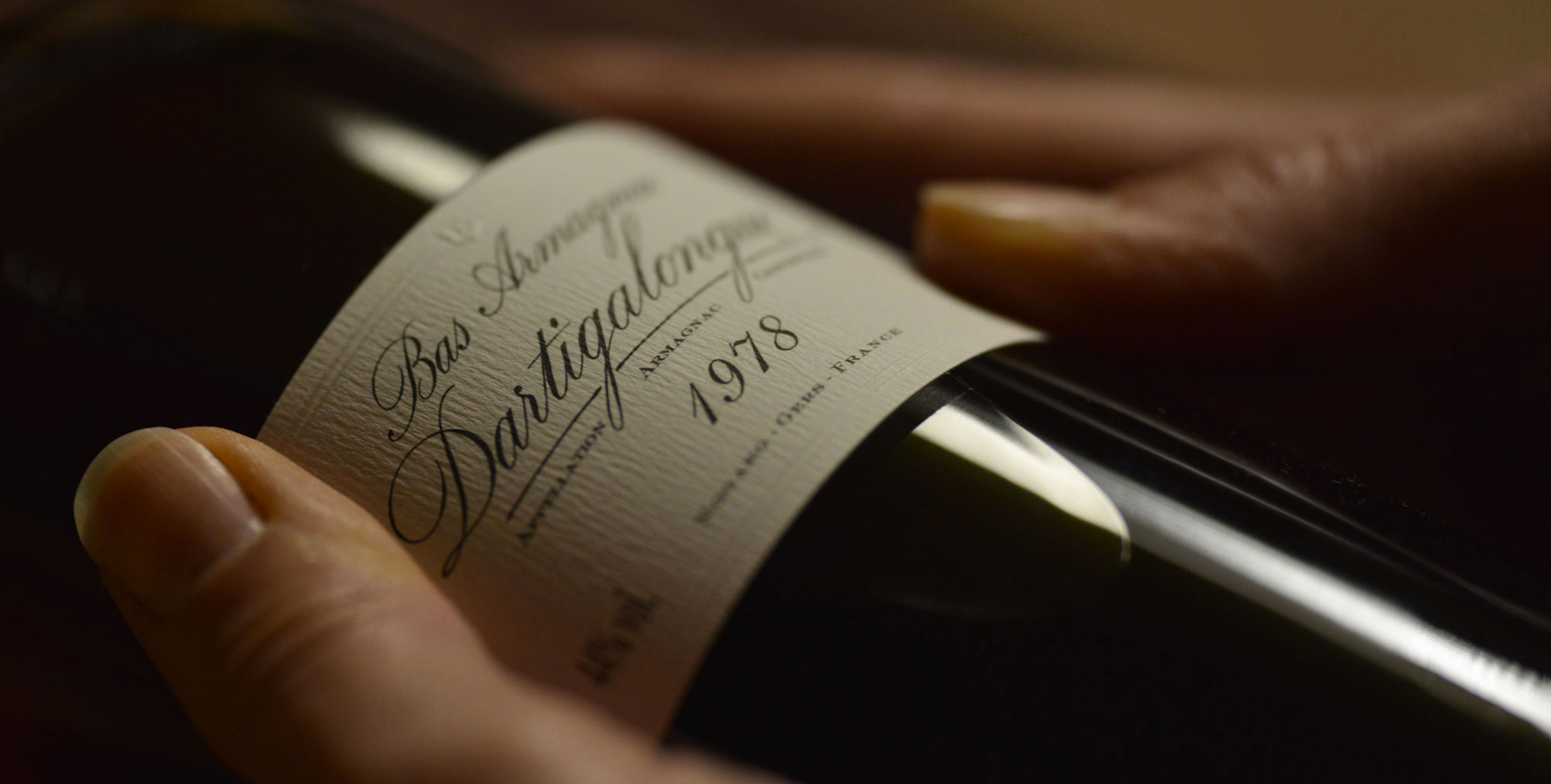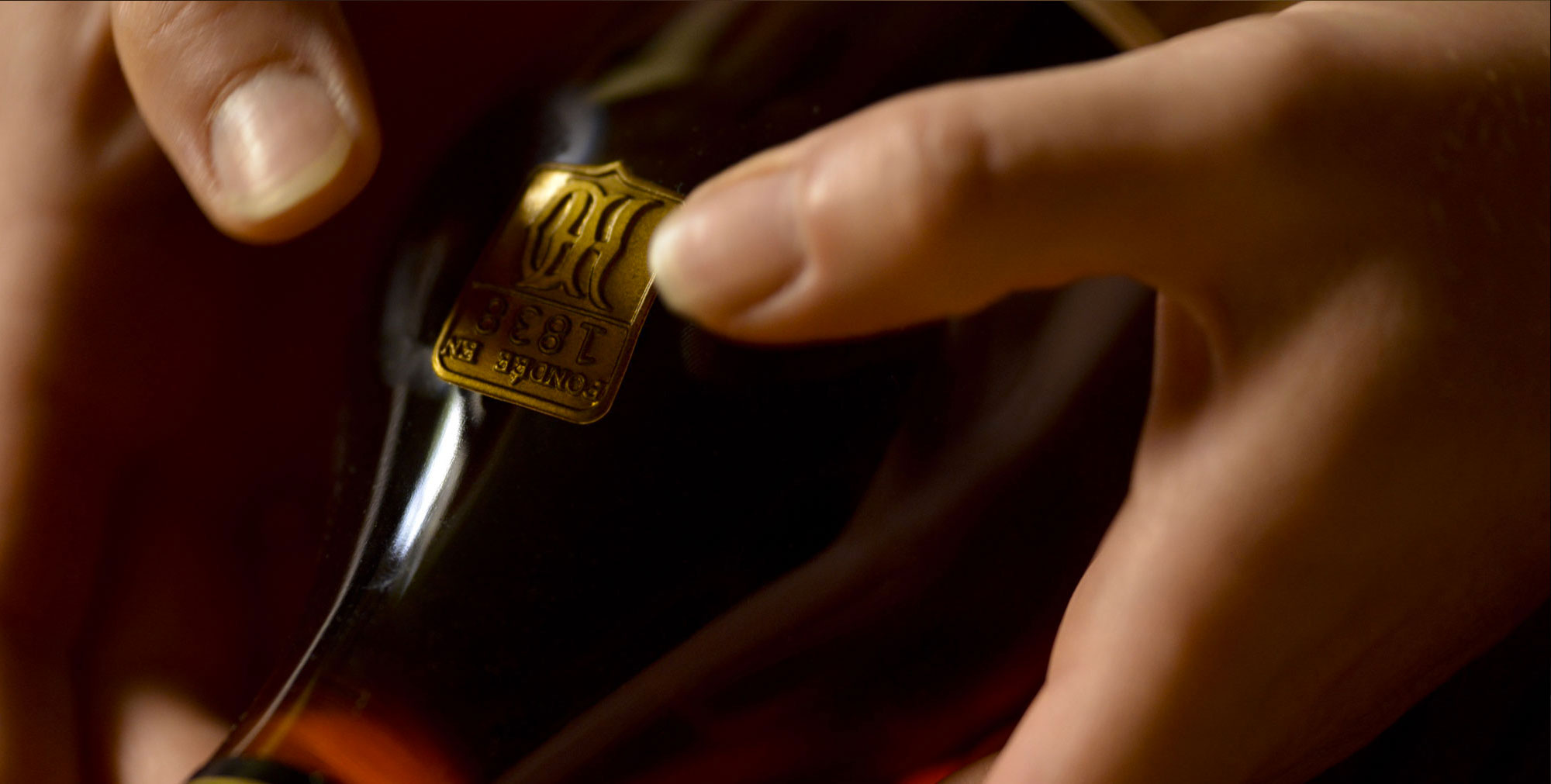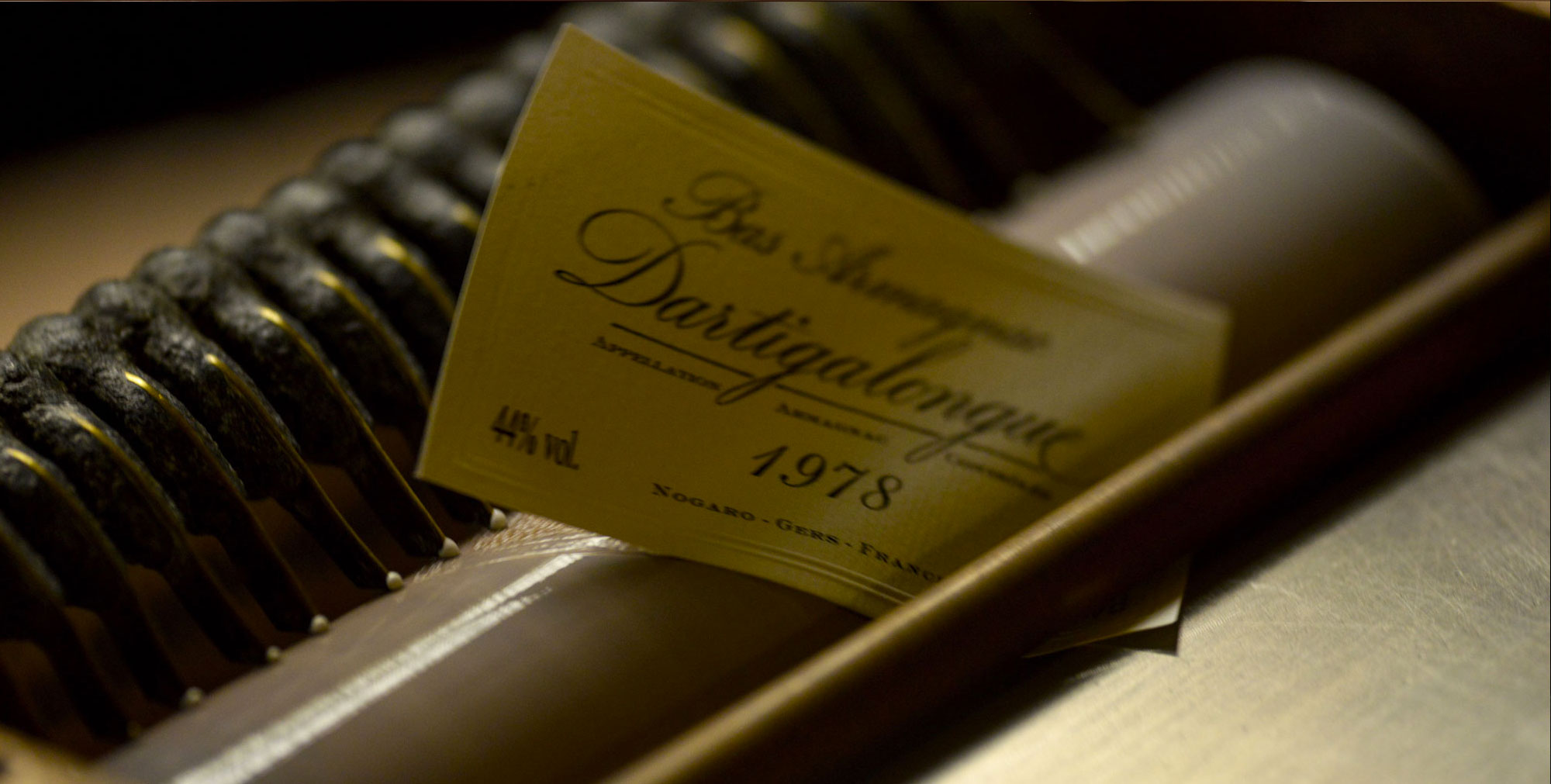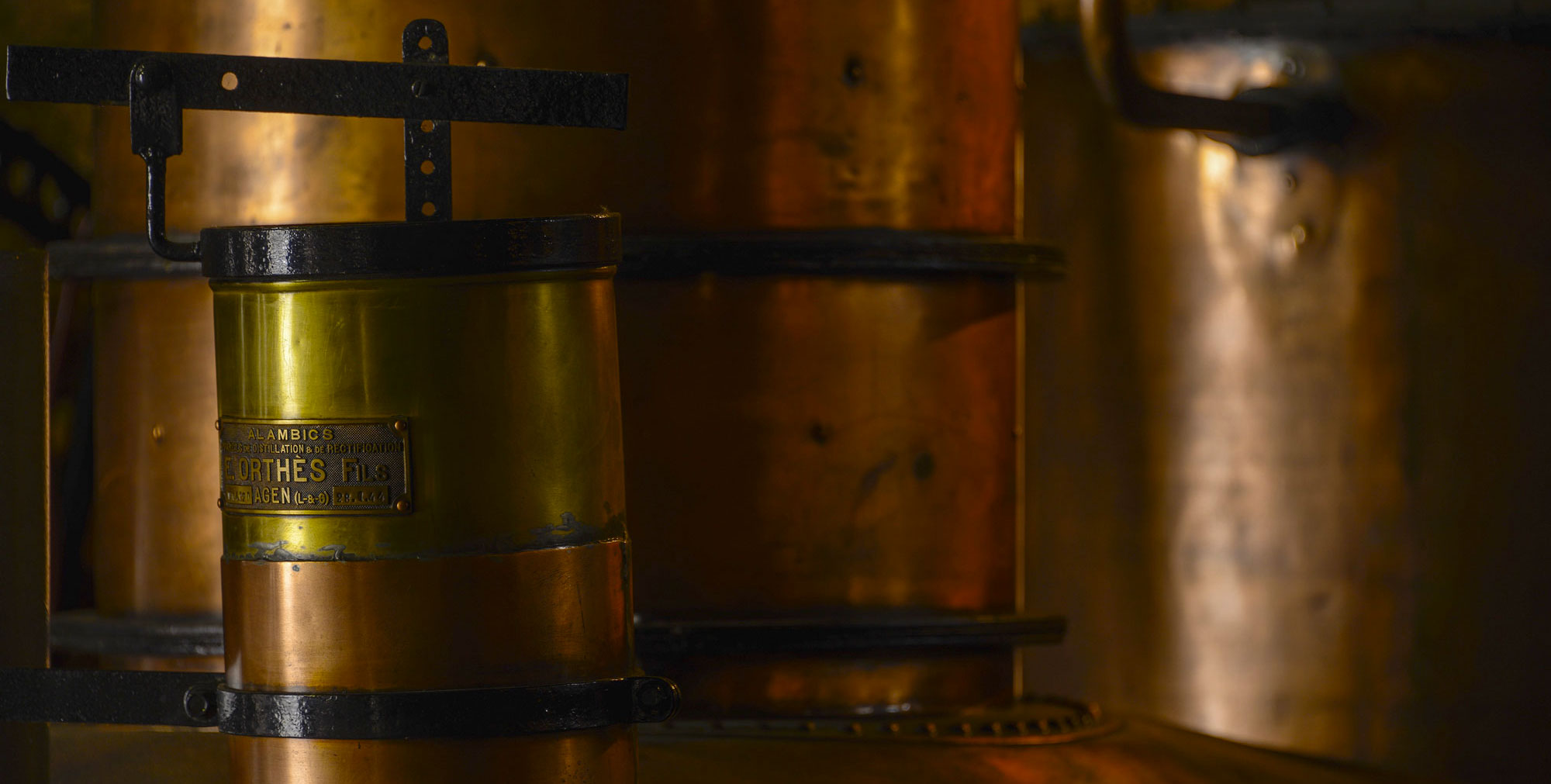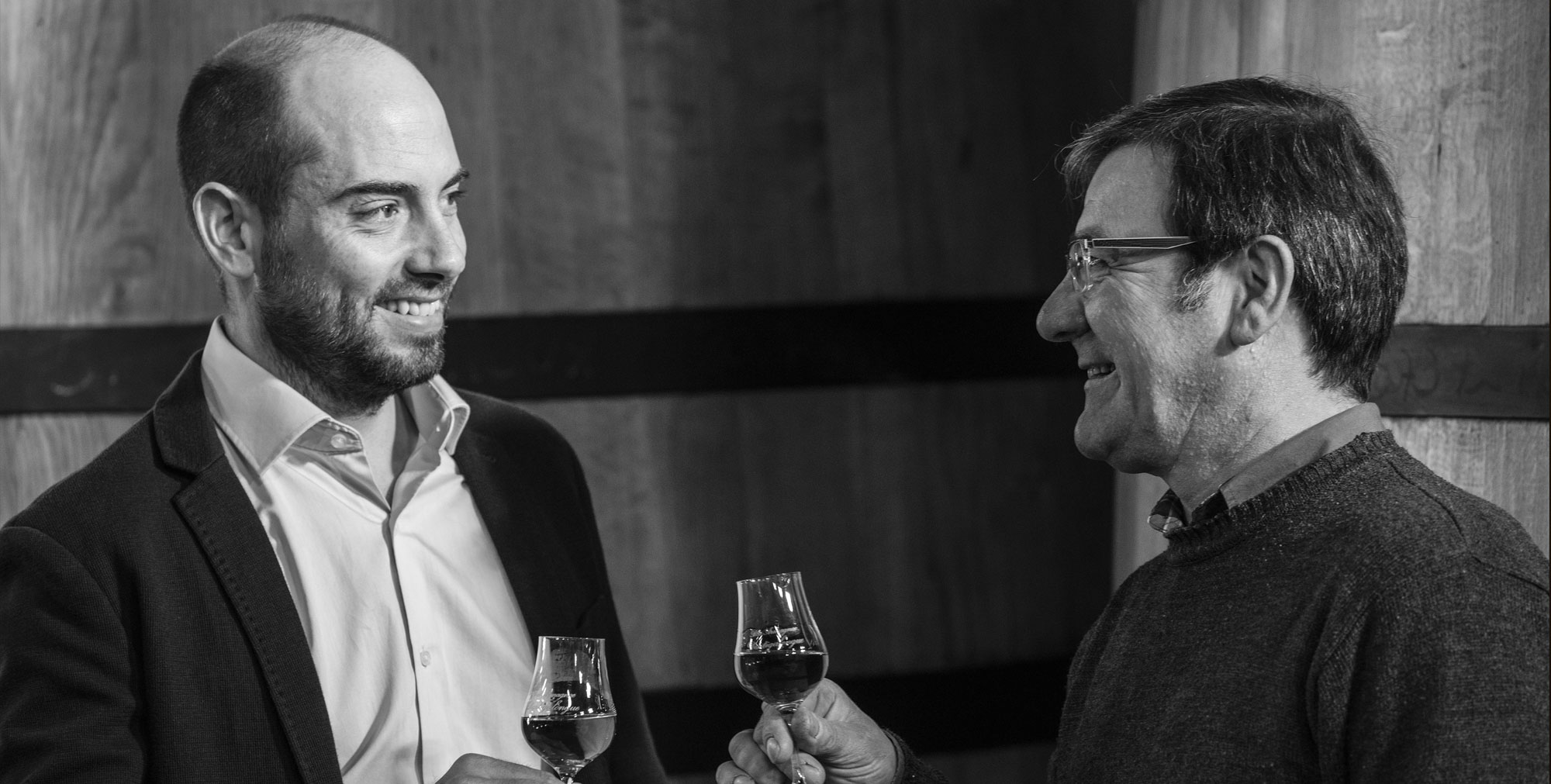The Dartigalongue family carefully selects its white eaux-de-vies made from the white wines of three varieties– Ugni Blanc (for the fruit) – Baco 22A (specific to AOC Armagnac – for the structure) and Folle Blanche (for the finesse).
The eaux-de-vies are from the Bas Armagnac terroir, with its silty and sandy soils that are reputed for giving fine and elegant Armagnacs.
Distillation takes place in an alambic with plates, a continuous distillation at a low degree of alcohol that is characteristic of the traditional Armagnac distillation in order to retain the maximum aromas and complexity.
The oak barrels used for ageing the eau-de-vie are bought from local coopers and are mostly made from Gascon oak – southwest. These barrels contribute to the generous and gourmet taste of the Armagnac.
The ageing is carried out successively in two different types of cellars: dry cellars that calm the fire in the young eaux-de-vie, followed by more humid cellars that will give roundness and finesse.
After 40 to 50 years of ageing in oak barrels, the cellar master decides to move the eaux-de-vies into ‘bonbonnes’ (demi-johns) where they will hardly evolve anymore.
The goal of this careful and precise ageing is to permeate the Dartigalongue Armagnacs with the family style that can be summed up in two words: freshness and full flavoured.
Soil
Terroir of Bas-Armagnac with sandy and silty soils
A terroir reputed for giving fine and elegant eaux-de-vies
Grapes
Blend of 3 complimentary grape varieties
Ugni Blanc (brings fruity notes like pear, apple)
Baco 22A (brings length in the mouth, structure and smoothness)
Folle Blanche (brings elegance and a floral note)
Distillation
Distillation in an Armagnac alambic at 58° abv
The distillation in a traditional alambic at a low alcohol degree allows us to keep a maximum of aromas and a remarkable ageing potential.
Oak barrels
Ageing in Gascon oak barrels (southwest France) with a wide grain gives great length in the mouth and full gourmet flavours (candied fruits) to the eaux-de-vie.
Every year, 30% of the distilled eau-de-vie is placed in new oak barrels.
Cellars
Alternating from dry cellars to humid cellars.
The dry cellars upstairs that are subject to great temperature variations, will remove the fire from the young eaux-de-vie. The humid cellars situated on beaten earth floors have a more stable temperature which will give them roundness and finesse.
Maturing – Blending
The maturation is surveyed and managed by Ghislain Laffargue, the DARTIGALONGUE cellar master since 1990. Benoit Hillion, the director and representative of the 6th generation, takes part in all decisions concerning the maturation. The blends are always created together.
